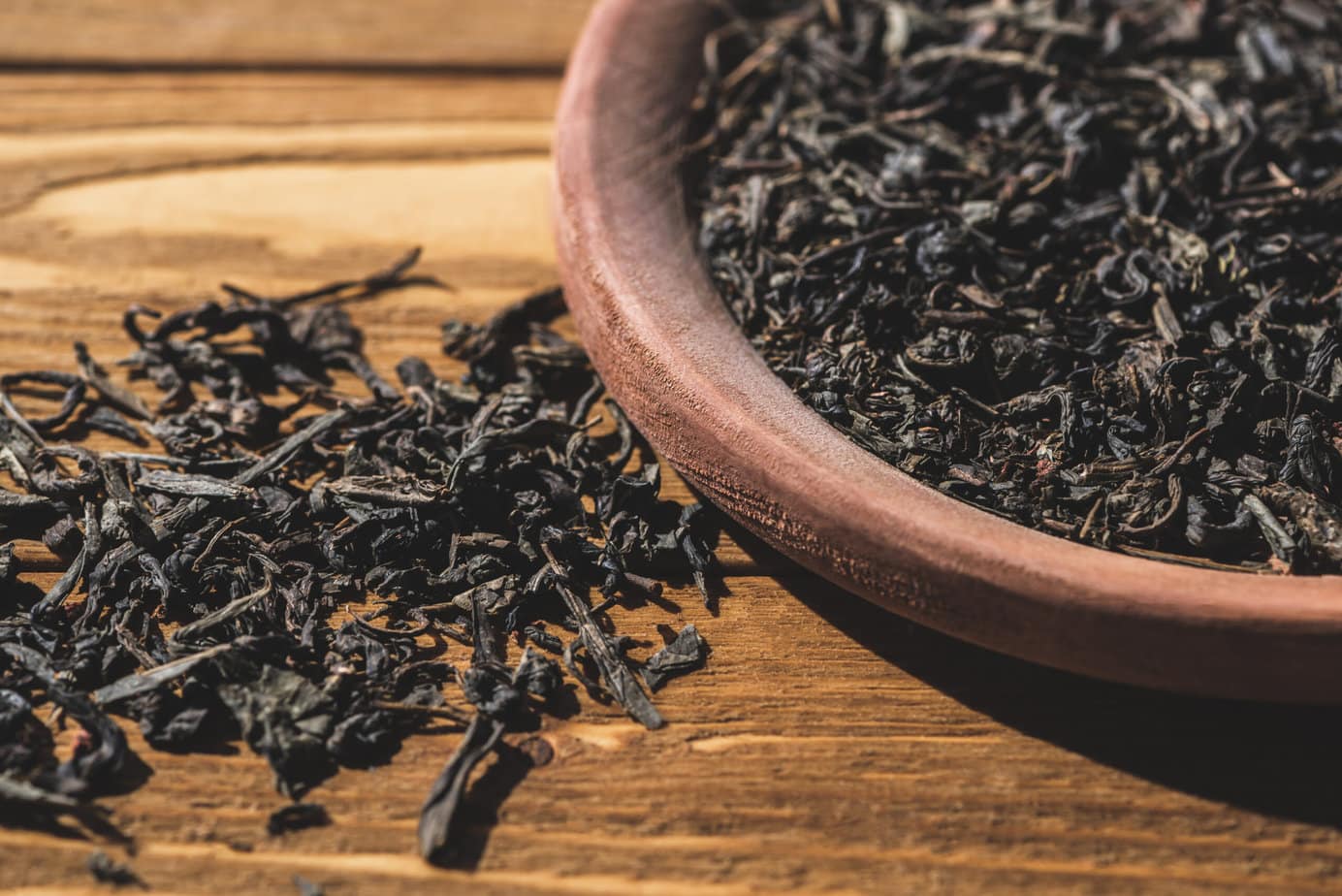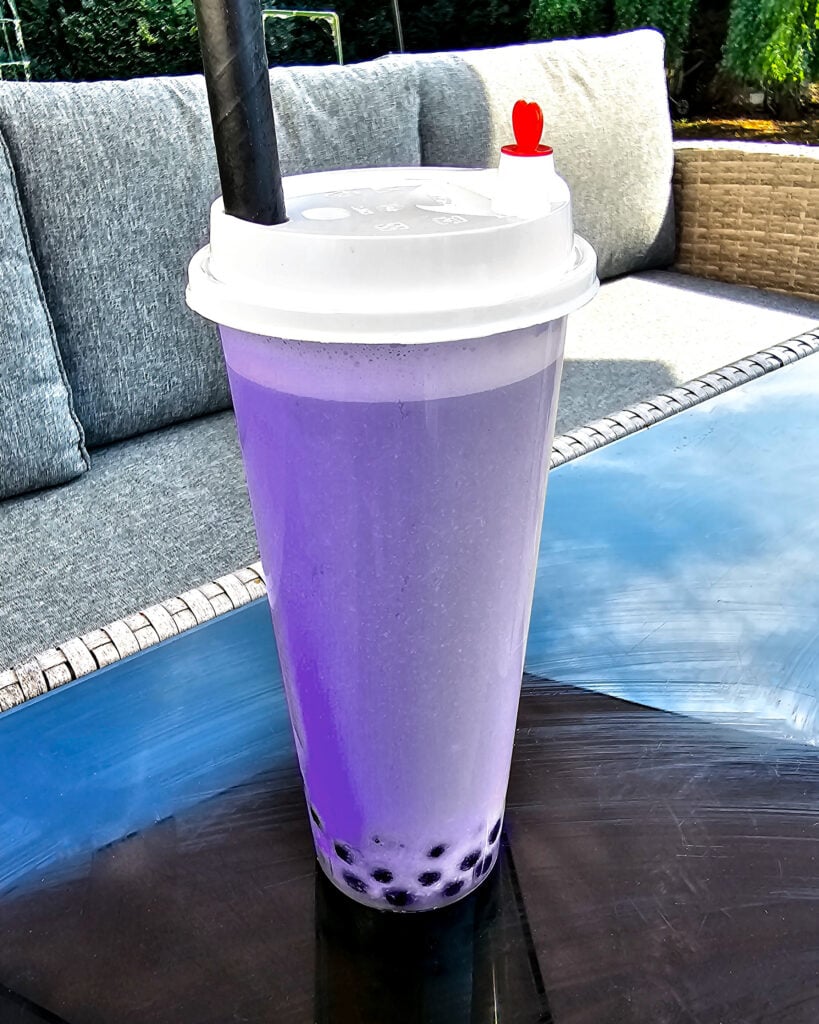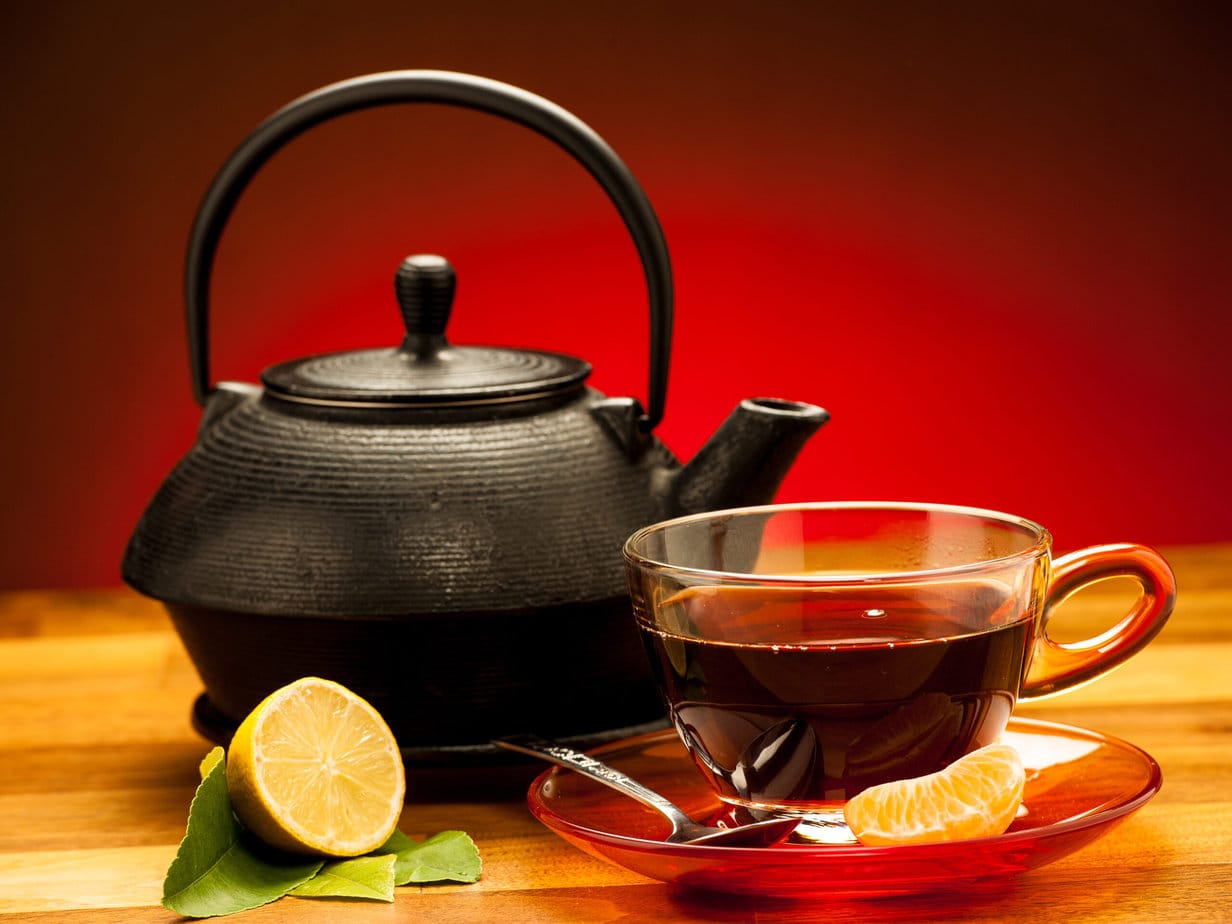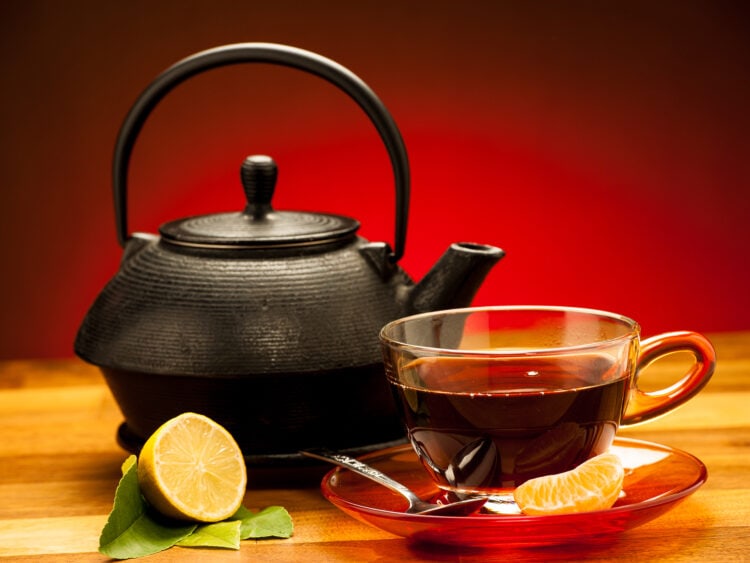When we talk about tea, we often think of black tea—a hallmark of English culture. Yet this beloved brew traces its roots to Asia.
So how did this Asian beverage capture Britain’s imagination? How should you enjoy it? What does it bring to the kitchen and to your health? In this article, we answer these questions while exploring other facets of black tea.
What is black tea?
Scientifically known as Camellia sinensis, this plant is the source of various types of tea: green tea, white tea, oolong tea and black tea.
There are two main methods of producing black tea:
Orthodox method: This technique uses whole or slightly broken tea leaves. After picking, the leaves are withered and rolled in different ways (to learn more, see our article on jasmine green tea). They are then oxidized or fermented to develop their distinctive color and aroma. Finally, they are fired to stop the oxidation process before being stored.
CTC method (Crush-Tear-Curl): Faster than the orthodox method, this technique consists of cutting the tea leaves into small pieces rather than rolling them. They are then quickly oxidized, which gives them an intense flavor. This method is particularly suited to industrial production, as it makes packing tea into bags easier.
Depending on how it’s made, black tea can range from dark brown to nearly black. Once brewed, it can take on amber, orange, or reddish tones—hence the name « Chinese red tea ». So black tea isn’t strictly black!
The different varieties of black tea
Black tea can be made from two varieties of the Camellia sinensis plant: Camellia sinensis var. sinensis and Camellia sinensis var. assamica. The first variety has smaller leaves and prefers a sunny, dry, and cool environment, which explains its prevalence in mountainous regions.
The second, specifically used for black tea production, offers a more intense flavor and adapts well to the heat and humidity of subtropical forest climates.
Origin of black tea
Black tea originated in China at the end of the 16th century, between the end of the Ming dynasty and the beginning of the Qing dynasty. According to a popular legend, soldiers took shelter in a tea workshop in Fujian, interrupting the production of green tea and oolong tea, the two types of tea then consumed in the country.
The tea leaves dried and oxidized in the sun. After the soldiers left, the workshop resumed production and discovered tea leaves that were more aromatic and fresher-tasting. This is how the first black tea was born, Lapsang Souchong (which means « young tea leaves on the great mountains »).
Dutch traders discovered this tea in 1610 and introduced it to England in 1658. The English then promoted this tea in their colonies, notably in India, helping to popularize it worldwide.
At the beginning of the 19th century, a second variety of tea, Camellia sinensis var. assamica, was discovered in India. It is particularly suited to black tea production.
The English then established plantations of this variety in Darjeeling, India, and continued to export black tea around the world, including to their colonies. That is why black tea from the Camellia sinensis var. sinensis variety is popular in China, while India favors Camellia sinensis var. assamica.

Today, black tea is produced in many regions of the world. Paradoxically, the largest producers of black tea are not China, the « homeland » of tea, but rather India, Sri Lanka, and Kenya.
Why is it called red tea in China?
In China, the tea commonly called « black tea » in Western countries is actually referred to as « red tea » (红茶, hóngchá). This difference in terminology is related to the color of the infusion rather than that of the tea leaves. When brewed, red tea shows a characteristic golden-red hue. In China, tea categories are described based on the color of their infusion: white, green, yellow, red, and black. The term « black tea » in China (Hei Cha) actually refers to a totally different category of tea, which is fermented and appears almost black when brewed.
The term « black tea » used to refer to red tea is probably linked to the history of the tea trade. Before various types of tea were exported from China, there was mainly green tea and a type of Chinese oolong tea called Bohea. The word « Oolong » (Wu Long) literally translates to « black dragon », and the term « black tea » was therefore used to designate it. When red tea became more popular, the term « black tea » remained.
In addition to red tea, China is also famous for other types of tea, notably green tea, white tea, oolong tea, and Pu’er tea. Each of these teas has its own unique characteristics, preparation methods, and production regions. Green tea is known for its antioxidant properties, white tea for its sweetness and subtlety, oolong tea for its aromatic complexity, and Pu’er tea for its depth and earthy character.
What is the difference between black tea and green tea?
Unlike green tea, black tea undergoes a longer oxidation process. During this process, oxygen reacts with the cell walls of the tea leaves, turning them brown to nearly black. By contrast, to produce green tea, oxidation is kept to a minimum to preserve a lighter color.
The degree of oxidation also influences the taste and aroma. Black tea tends to be richer, with malty, fruity, caramelized, even smoky and spicy notes. Green tea is milder, with vegetal, herbaceous, or seaweed notes.
Because it’s more fully oxidized, black tea also keeps longer than green tea.
How to brew and enjoy black tea?
Each variety of black tea has its own requirements for brewing temperature and time. It is advisable to consult tea vendors or follow the brewing instructions indicated on the packaging. As a rule, black tea is brewed at a higher temperature (between 90°C and 100°C) and for a longer time (3 to 5 minutes) than green tea.
If you don’t have a tool to measure temperature, water brought to a boil will do. It is also important to mind the ratio between tea and water—generally 240 ml of water for about 2 grams of tea. Spring water is ideal. Don’t forget to cover the tea while it brews to retain heat, and avoid over-brewing, as this can make it bitter and astringent.
High-quality black tea leaves can be reused for multiple infusions. As with green tea and other types of tea, it is best enjoyed plain, without additives, to fully appreciate the flavor. That said, feel free to add sugar, milk, cream, or even ice to suit your taste.
In short, black tea offers a wide variety of flavors and aromas, and its preparation can be tailored to your preferences. It is not only delicious but also adaptable to many styles of enjoyment.
How to use black tea in cooking?
In Western countries, black tea is frequently used in desserts and is the main ingredient in famous drinks like English Breakfast Tea and Earl Grey Tea. In contrast, in Asian cuisine, black tea is versatile and fits well into both sweet and savory recipes.
It is the backbone of many Asian milk tea drinks, such as Taiwan’s Bubble Tea, India’s chai, Hong Kong’s yuanyang, Thailand’s cha yen, and Malaysia’s teh tarik. It can also be mixed with lemon juice to create Vietnam’s Trà Chanh.

Black tea also has its place in savory dishes. For example, in Indonesian cuisine, it is used as a seasoning for satay, resulting in black tea satay. In Chinese and Taiwanese cuisines, it is used to prepare exquisite black tea eggs, called Chaye Dan or Cha Yip Dan in Chinese.
When prepared well, black tea can impart an aroma that is both pleasant and enticing to dishes.
What are the health benefits of black tea?
Rich in antioxidants, black tea—like other types of tea—is good for the body. It may help protect cardiovascular and gut health; support the management of diabetes, obesity, high blood pressure, and digestive issues; lower LDL cholesterol levels; and help fight cancer. In addition, it can boost concentration by providing a steadier lift than coffee. Sometimes, it is used as a hair rinse to enhance color and help prevent hair loss.
Aim for a reasonable intake—about 2 to 3 cups per day. Exceeding this may lead to issues such as diarrhea, constipation, anxiety, frequent urination, glaucoma, or seizures.
Where to buy black tea and how to store it?
You can buy black tea in stores specializing in Chinese or Indian teas, or online. It is recommended to ask vendors about the flavor, brewing methods, and health benefits of the tea you choose.
After purchase, store tea away from light, humidity, and strong odors such as spices or coffee. Stored properly, tea can maintain its quality for up to two years.

Ingredients
- 240 ml spring water
- 2 grams high-quality black tea
Instructions
- Heat the spring water to 90–100°C. If you don’t have a thermometer, bring it to a boil.
- Add 2 grams of black tea to a teapot or infuser.
- Pour the hot water over the tea leaves.
- Cover the teapot or infuser to retain heat.
- Steep for 3 to 5 minutes.
- Remove the leaves or infuser from the teapot.
- Serve immediately to enjoy the tea at its best.
- Optional: Add sugar, milk, cream, or ice to taste.

